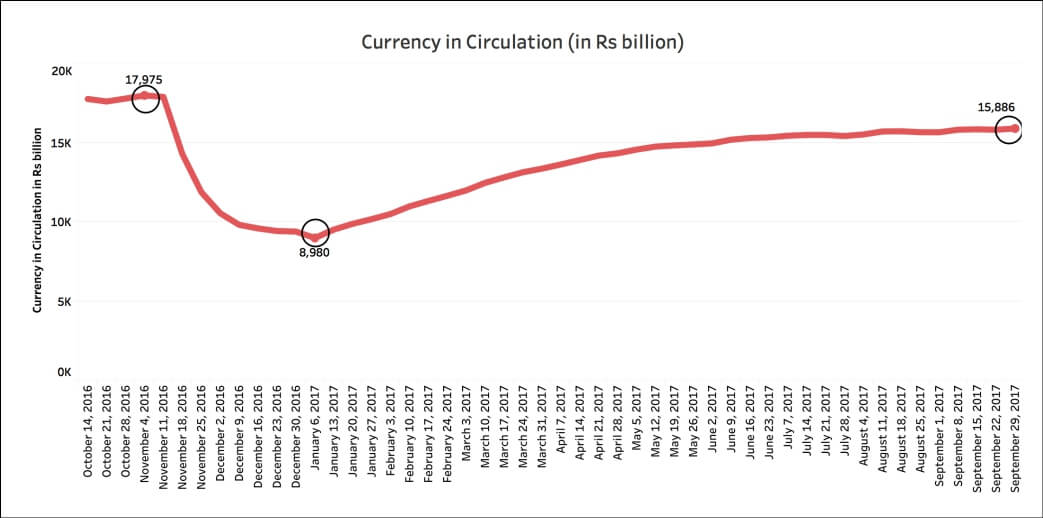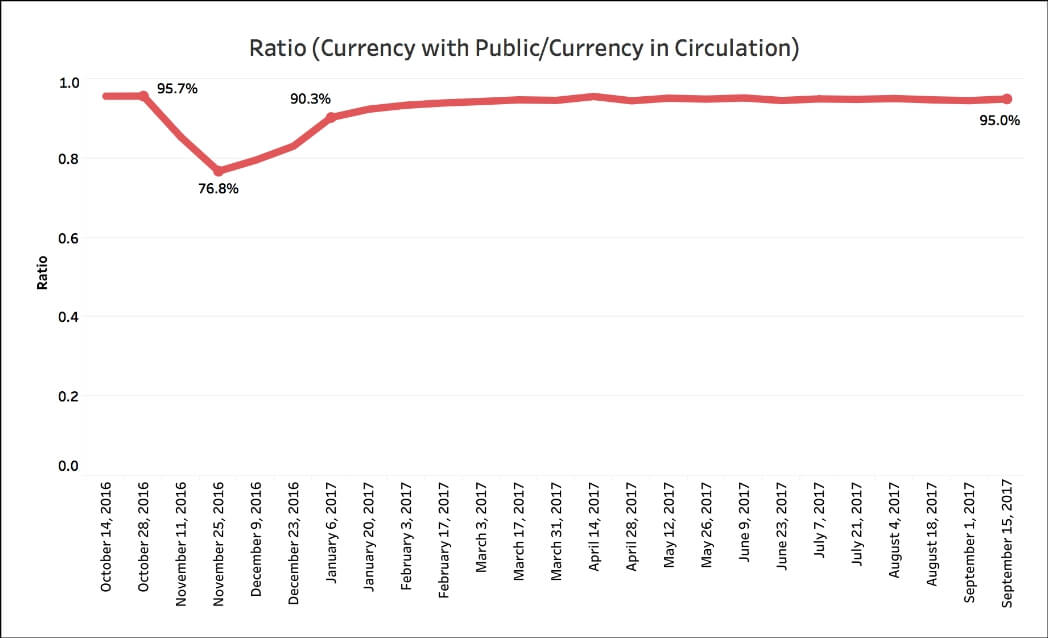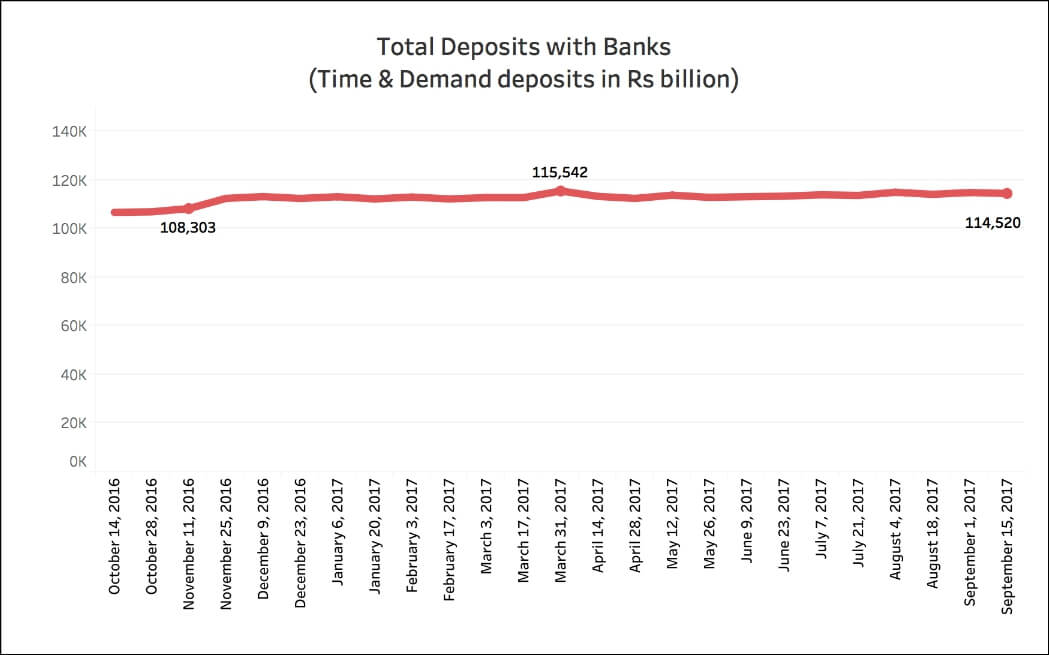One of the stated goals of demonetization was to reduce the amount of cash in the economy. Eleven months into demonetization, the amount of currency in circulation is now at 88% of the pre-demonetization levels.
The government has on multiple occasions said that a less cash economy was one of the goals of the demonetization. Recently, the Prime Minister in his address to Company Secretaries at the inauguration of the golden jubilee year of ICSI also mentioned that the cash to GDP ratio has come down to 9 per cent, from 12 per cent before demonetization. But what is the amount of currency in circulation eleven (11) months after demonetization? Reserve Bank of India’s (RBI) weekly statistical supplement shows that the total currency in circulation & currency with public, both are at 88% of the pre-demonetization levels as of September 2017.
RBI’s Weekly Statistical Supplement (WSS)
The RBI releases a WSS that contains numbers about RBI’s assets & liabilities, foreign exchange reserves, business of the scheduled commercial banks, numbers about the money stock, currency in circulation etc. among other things.
As per RBI’s definition, Currency in Circulation includes notes in circulation, rupee coins and small coins. Currency with Public is currency in circulation minus the cash with banks.
Demand deposits with banks include all liabilities (excluding inter-bank) that are payable on demand. Time deposits with banks are liabilities (excluding inter-bank) which are payable otherwise than on demand like fixed deposits etc.
Currency in Circulation is at 88% of the Pre-Demonetization levels
The total currency in circulation just before the announcement of demonetization, as of November 4, 2016 was Rs 17.97 lakh crore. This continuously decreased as old notes were being deposited in banks and reached a minimum of Rs 8.98 lakh crore on January 06, 2017. This was the only occasion since October 2016 when the currency in circulation went below Rs 9 lakh crore. Since January 2017, the currency in circulation increased continuously as new notes were brought into circulation. The currency in circulation crossed Rs 15 lakh crore in June 2017 and was at Rs 15.88 lakh crore by the end of September 2017. This is slightly more than 88% of the currency in circulation just before de-monetization.
Proportion of the Currency with Public back to Pre-demonetization levels
Just before demonetization, the proportion of currency with the public out of the total currency in circulation was 95.7%. In other words, out of every Rs 100 in circulation, Rs 95.7 was with the public and the rest Rs 4.3 with the banks. This came down to the lowest of 76.8% towards end of November 2016 when people were depositing all their old notes with the banks. As with the trend of total currency in circulation, the proportion of currency with public slowly increased to 90% in January 2017 and is back to 95% as of mid-September 2017.
Total Deposits in Banks increase by over Rs 6 lakh crore
One major fall-out of demonetization is the enormous increase in the amount of deposits in banks. Just after demonetization (as of November 11, 2016), the total deposits in banks (time & demand together) accounted for a little over Rs 108 lakh crore. This went up to a high of Rs 115.5 lakh crore as of March 31, 2017 (the extended last date for exchange of old notes). Thereafter, the total deposits have again decreased to reach Rs 114.5 lakh crore as of mid-September 2017. Between November 2016 & September 2017, time deposits have increased by over Rs 4.5 lakh crore while demand deposits increased by over Rs 1.5 lakh crore.
Featured Image: Currency in circulation


